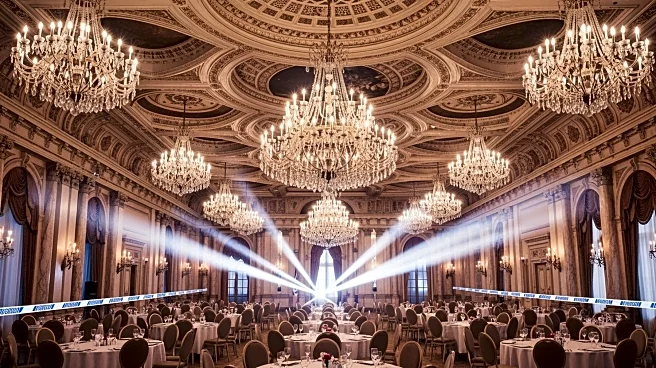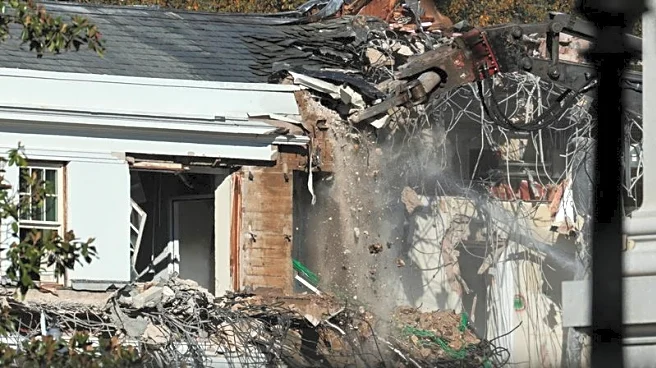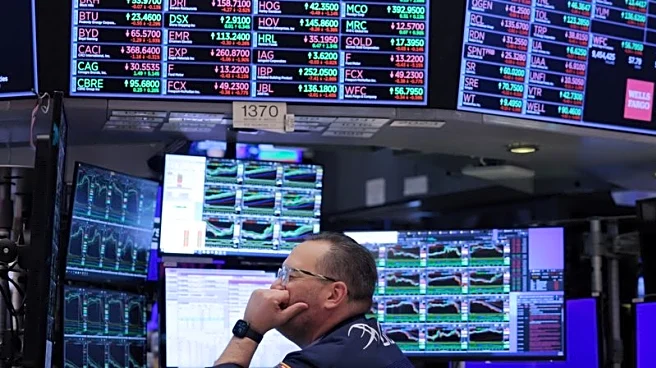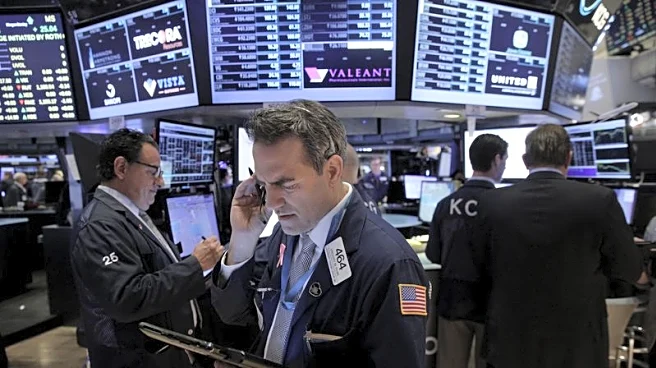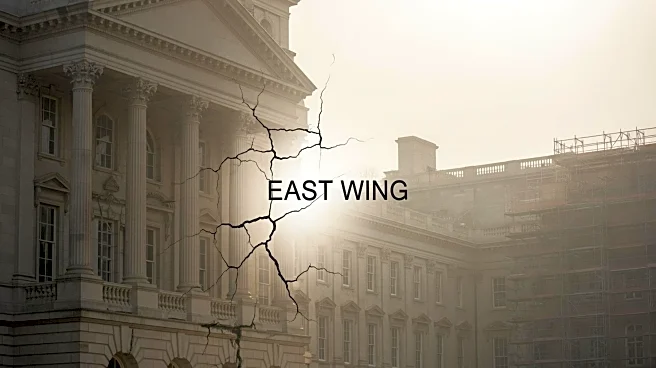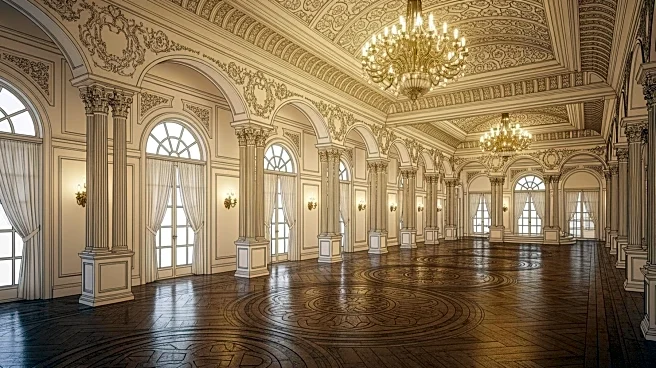What's Happening?
President Donald Trump has announced plans for a $300 million ballroom at the White House, with funding from major tech companies and other corporate donors. The White House has released a list of contributors,
including Amazon, Alphabet, Apple, Microsoft, and Meta. The project involves demolishing the East Wing of the White House to make room for the 90,000 square foot ballroom, despite previous assurances that the building would not be impacted. The funding includes a $22 million contribution from Alphabet, part of a settlement with Trump over a lawsuit related to his ban from YouTube. Other donors include Palantir, Micron, Coinbase, Lockheed Martin, and individuals such as Harold Hamm and the Winklevoss twins.
Why It's Important?
The construction of the ballroom at the White House, funded by major corporations, highlights the intersection of politics and corporate influence. The involvement of Big Tech companies, particularly in light of past tensions with President Trump, underscores the complex relationships between the government and the tech industry. This development may raise questions about the influence of corporate donations on political decisions and the use of public spaces for private interests. The project also reflects on the broader implications of corporate contributions to government projects, potentially setting a precedent for future public-private partnerships.
What's Next?
As the project progresses, there may be increased scrutiny from political leaders, watchdog groups, and the public regarding the transparency and ethics of corporate funding for government projects. The disclosure of President Trump's personal financial contribution to the project is anticipated, which could further influence public perception. Additionally, reactions from historical preservationists and those concerned with the integrity of national landmarks may shape future discussions and decisions related to the project.
